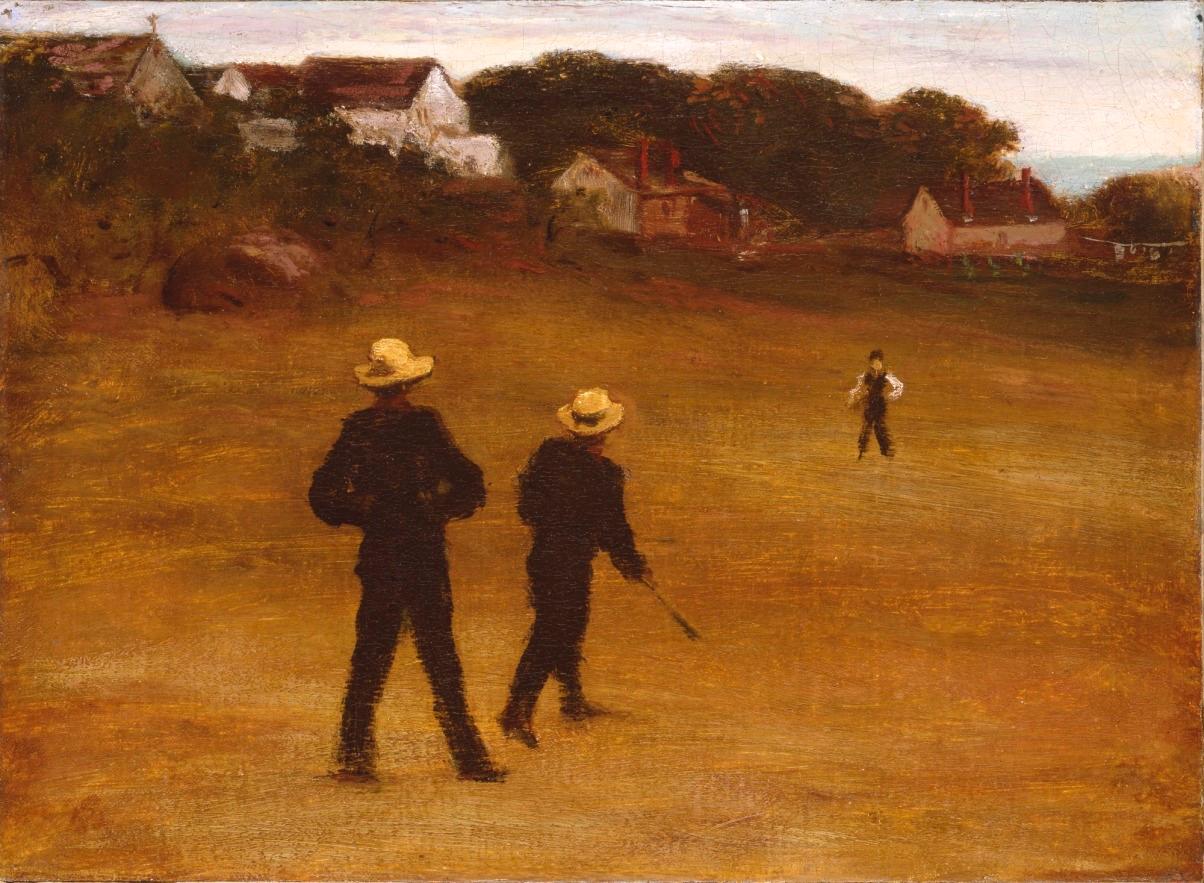
William Hunt, “The Ball Players,” 1877 // DIA Permanent Collection.
Now showing at the Detroit Institute of Art (DIA), “Play Ball! Transforming the Game, 1876-2019” coincides with the 35th anniversary of the Detroit Tigers’ 1984 World Series championship. In addition to various objects and memorabilia exploring the history of America’s national pastime, the exhibition also features collector E. Powell Miller’s complete T206 set of tobacco company cards, released from 1909-1911.
StockX talked with DIA chief curator, Ken Myers, about putting together the exhibition, the history of baseball cards, and the future of collecting.
The following interview has been lightly edited for length clarity.
StockX: Ken, thanks so much for taking the time to talk with us. Please walk us through how the “Play Ball!” exhibit came together?
Salvador Salort-Pons, the DIA director, met collector E. Powell Miller a couple of years ago. Miller has one of the best collections of T206 baseball cards. He had it rated, and his set came out to be the fourth or fifth best set of these cards. Salvador met Miller and thought the DIA could do a show drawn from his collection as a way of continuing to get different audiences into the museum. So we did a show last year, which was organized by another colleague, and I was asked to do a followup show this year.
What types of things will visitors find in the exhibit?
The exhibition is comprised of the two galleries. The first gallery is about the movement from an unorganized rural pastime to an urban, rule-bound, professional commercial sport. So the first gallery includes objects from 1876 to 1919, and then the second gallery is 1919 to the present. We use 1919 for two reasons: one, it was one hundred years ago; two, it’s as good a date as any to document when the rules changed to encourage power hitting. It really goes from being a pitchers’ game to a more modern sluggers’ game after 1919.
Each of the two galleries includes different types of materials. One section deals with the 1887 championship team from Detroit, the Detroit Wolverines. The second gallery focuses on the 1984 Detroit Tigers’ championship team. Each section also has a focus on one or two sluggers, including players like Ty Cobb and Hank Greenberg. We also include baseball-related objects and products, most notably, baseball cards.
How do you include baseball cards in the exhibit?
I was most interested in thinking about the history of cards. So the first gallery uses cards from the 1870s up to 1919. Local photographers produced the earliest cards; they were basically taking pictures of celebrities. By the end of the 1880s, with the development of commercial lithography, which makes it easier to distribute mass images, companies start using the cards as advertising. The most influential of which ends up being cigarette companies. Cigarette companies dominate the market until about 1911.

Dan Brouthers swinging a baseball bat, 1887, Gray Studio, photographic print mounted on board // Courtesy of Detroit Historical Society.
In the second gallery, we do a decade by decade timeline with three different cards from each decade. The focus of this gallery is to show the emergence of different kinds of companies releasing cards, why the tobacco companies fell away, and how gum companies take over the market.
What are some of the cards that you find most interesting and essential for the exhibition?
Some of the earliest cards, the earliest photography studio cards, actually come from the Detroit historical society and relate to the Detroit Wolverines, from the 1880s, which I find fascinating. An entire wall is given over to Powell’s T206 set which contains the most of the most valuable cards in the show. Powell has one example of every face from the T206 set. Different fronts have been identified, and he has one instance of every front, including some of the rarest cards. There’s a beat-up Honus Wagner, but it’s still worth serious money cause there’s only 75 of them in the world.

Honus Wagner, from the T206 White Border Set, 1909–11, commercial lithograph, American Tobacco Company // Collection of E. Powell Miller.
What makes the T206 cards so valuable?
It’s a combination of rarity and independent market demand.

Mordecai Brown, Chicago Nat’l., from the T206 White Border Set, 1909-1911, Polar Bear Tobacco Company, commercial color lithograph // Courtesy of E. Powell Miller.
So how do we go from cards as a form of advertising and marketing to cards being collected for their inherent value?
It’s in the 1980s or 1990s. But more recently, Topps reestablished their monopoly during the last 10 years. I’m not quite sure how that happened. I think you got to a point where there were so many different competing companies that the idea of creating art, rarity, and value collapsed on itself. After that, only the old cards, which are truly rare, retained value.
But it’s in the 1980s when you get Fleer, Donruss, and Upper Deck competing with Topps. These upstart companies identified a different market focused on nostalgia rather than on kids playing with cards. By the 1990s, the number of kids playing with baseball cards declined. By the 2000s, all of these new companies go out of business and end up being bought up by Topps. So by 2009, Topps is again in control of baseball cards.
What do you think the future holds for baseball cards and trading cards?
It’s two different kinds of questions. I suspect there’s a baseline market for trading cards, and celebrity cards, whether they’re sports figures or other types of cards, that will remain attractive to kids. But the market is a lot smaller than it was when you had the burst of baby boomers playing with cards in the 1950s and 1960s. The market is now back to what the market had traditionally had been for most of the post-WWII decades where it’s mostly a kids’ market. There’s a stable enough market that Topps can make money featuring that market, and I assume it’s reduced but stable.
What about the collectors’ market?
The collectors’ market I find intriguing. The prices that some of the rarest cards bring are upwards of $1 million. I wonder if these rare cards will hold their value in 20 years when this generation of collectors is gone?
The exhibition runs through September 16, 2019.




